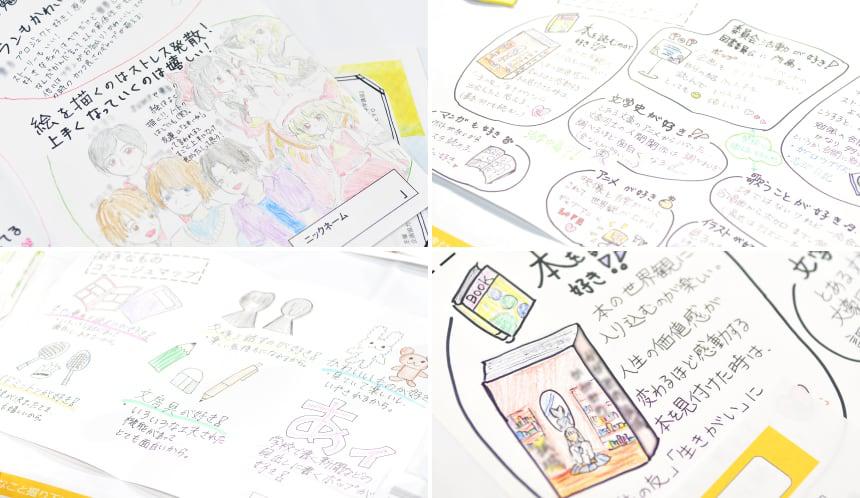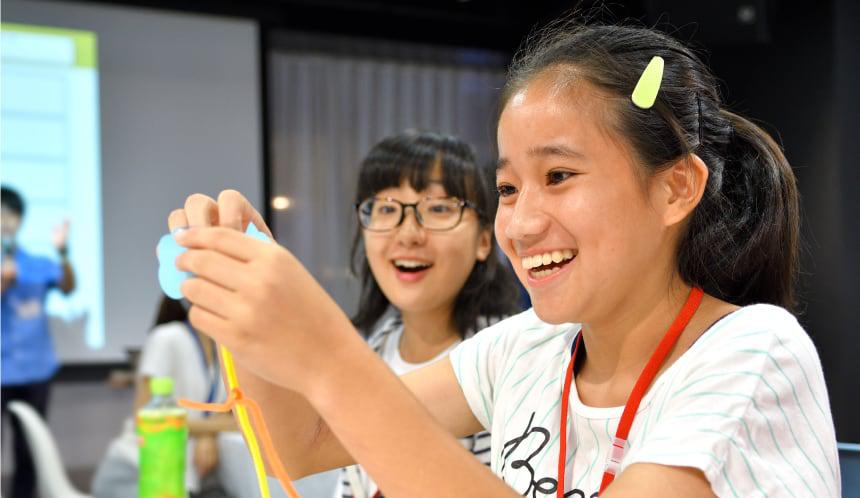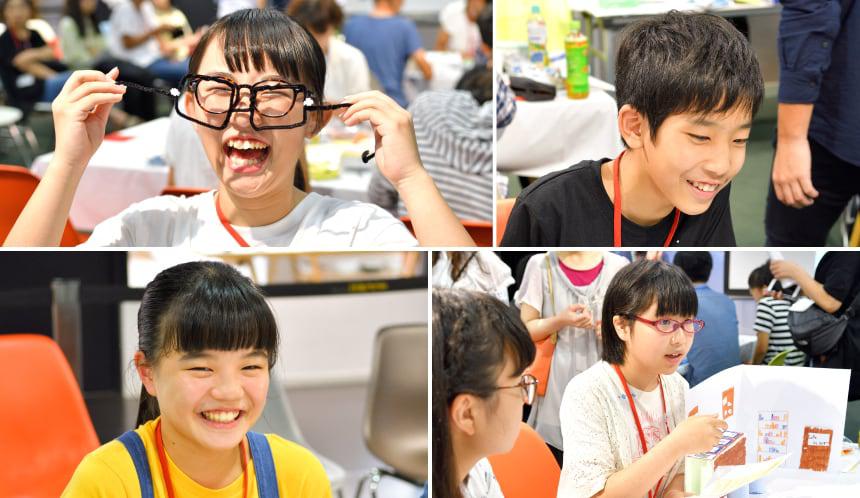2018.10. 5
2nd year junior high school camp: offering a “self-design camp” to get children to think about “making money” from their “likes”
Benesse Corporation’s “Shinkenzemi junior high school courses” include workshops designed to help 2nd year junior high school students find “what they want to be” from within “things they like.”Amid the current shift in working styles, we offer such courses in the hope that students can independently map out their own future and discover motivation for learning. We would like to introduce some of the participants that have found the start of new possibilities.

One of the themes of the 2nd year of junior high is thinking about your future. While some students can identify their dream and begin moving toward it, an increasing number have difficulty envisioning a future path amid the tumult of daily life. A large number of children are also worried that introduction of AI will eliminate jobs.
“Shinkenzemi junior high school courses” aim to move students on from such concerns by discovering what they want to be, and part of this is our “Self-design camp: a summer event to help 2nd year high schoolers discover what they want to be.”The theme of the camp is “thinking about making money from your likes.”Our goal is to increase study motivation so that students can make progress down the future path they have independently mapped out.
“Making money” involves solving someone’s “problem”
On September 1, 2018, 24 2nd year junior high school students gathered in the event space at the Shibuya Hikarie building in Tokyo. The event was comprised of two parts, the first a session designed to get students thinking about “making money” via presentations from people working in the popular jobs of voice actors and game creators. The second part was a workshop involving simulations of “making money”, and we would like to look more closely at that here.
Participants were organized into groups of four students and an advisor Benesse staff member, with the overall workshop coordinated by facilitator Tetsuya Kawamura, CEO/Educational Designer at COLEYO Inc.
Mr. Kawamura began with a lecture, saying “Work involves solving someone’s “problem.” Despite advances in AI, creating the individuality of a product will always be done by humans. If you can utilize the things that you like to create an attractive product that makes someone happy, then work becomes enjoyable.”
Students then began exploring why, what about, and in what way they like the things they like utilizing collage maps of their likes prepared earlier. Through a variety of processes, they then came up with product ideas based on their likes and made a prototype.

Trying to use others’ opinions to make better products

Students discovered that it is quite difficult to come up with a product idea that solves someone’s problem. One of the participants who liked trains created a folding desk to enable people to do office work on trains, “Hiza de Work”, apparently drawing inspiration from seeing adults work with laptop PCs on their knees. The concept of “folding” sparked the following conversation among group members:
“If this desk could be made from materials at a 100yen shop, would you buy it for ¥1,000?”
──“A large thing would be difficult to take on the train, so I wouldn’t buy that.”
“How about if it was foldable? The use of more materials might push the price up.”
──“Oh, that might be useful!”
The “work” process of using others’ opinions to make improvements occurred spontaneously.

The 90-minute preparation period flew by, and soon participants were ready to present their prototypes. Presenters had to help first-time listeners understand what it is they like and what problem was being solved.
For example, one product was a “directions app synched to AI and smartphones” that came out of the experience of being lost in the wide expanses of Tokyo Station. Users install the app at the ticket gate and input their desired destination, and the app would guide them smoothly through the station. Some of the adults in the workshop were heard saying “That’s interesting.”
Another product made by a cat lover was a “camera equipped robot” for frequent travelers who miss their cat. By uploading a photo of their face to the robot and using remote control, users would be able to play with the cat as if they were in the room and ensure the animal does not forget their face. There were a variety of other products that aimed to cheer up people with problems.
Connecting your work and your likes is fun!
We sought the opinions of participants after the workshop.
“It was fun listing to the opinions of the group and making gradual changes to the idea. I had thought work was tough based on what I saw from my parents and read in books, but today’s event has changed my image to something that can be fun if you link what you like to your work.”
“I got a real sense of what work is like. As each group member was thinking about their own future, it was enjoyable having serious discussions.”
“I was able to make a better product by listening to the opinions of group members, the facilitator, and the advisor. I don’t have much chance to talk with working adults, so I was happy that adults discussed things with me in a serious fashion.”
We also got the thoughts of parents, who had been watching from the back of the event.
“I recommended the event because my child was unsure which future direction to take. It was unlike the work experience they get at school, and I thought it was a good opportunity to think about “work.”
“Most of children’s interaction is with parents and teachers, and I was reassured when I saw my child was able to talk one-on-one with other adults and listen to the opinions of other children apart from their friends. I believe it was a very stimulating experience.”
These 2nd year junior high school students spent part of their summer experiencing how “work” can develop from the things they like. Seeing the smiling faces of everyone at the end of the event, we sensed the significant prospects of opening up new future avenues they had previously not considered.
The opinion of the event leader

(Japanese version only)
(Yuriko Arai, marketing staff for junior high school products)
All the children were able to complete unique product ideas after much thought and overcoming significant challenges. I was impressed by their powers of understanding and flexible thinking. I hope that this opportunity marks a major step forward in connecting to their futures. Through the “Shinkenzemi junior high school courses,” we aim to provide a range of events, products, and services to enable junior high schoolers to develop “the ability for independent learning.”
*Event presented by “Shinkenzemi junior high school courses” in cooperation with:
Tokyo Work Design Week founder & organizer / & Co., Ltd. CEO Takashi Yokoishi
COLEYO Inc. CEO / Educational Designer Tetsuya Kawamura
